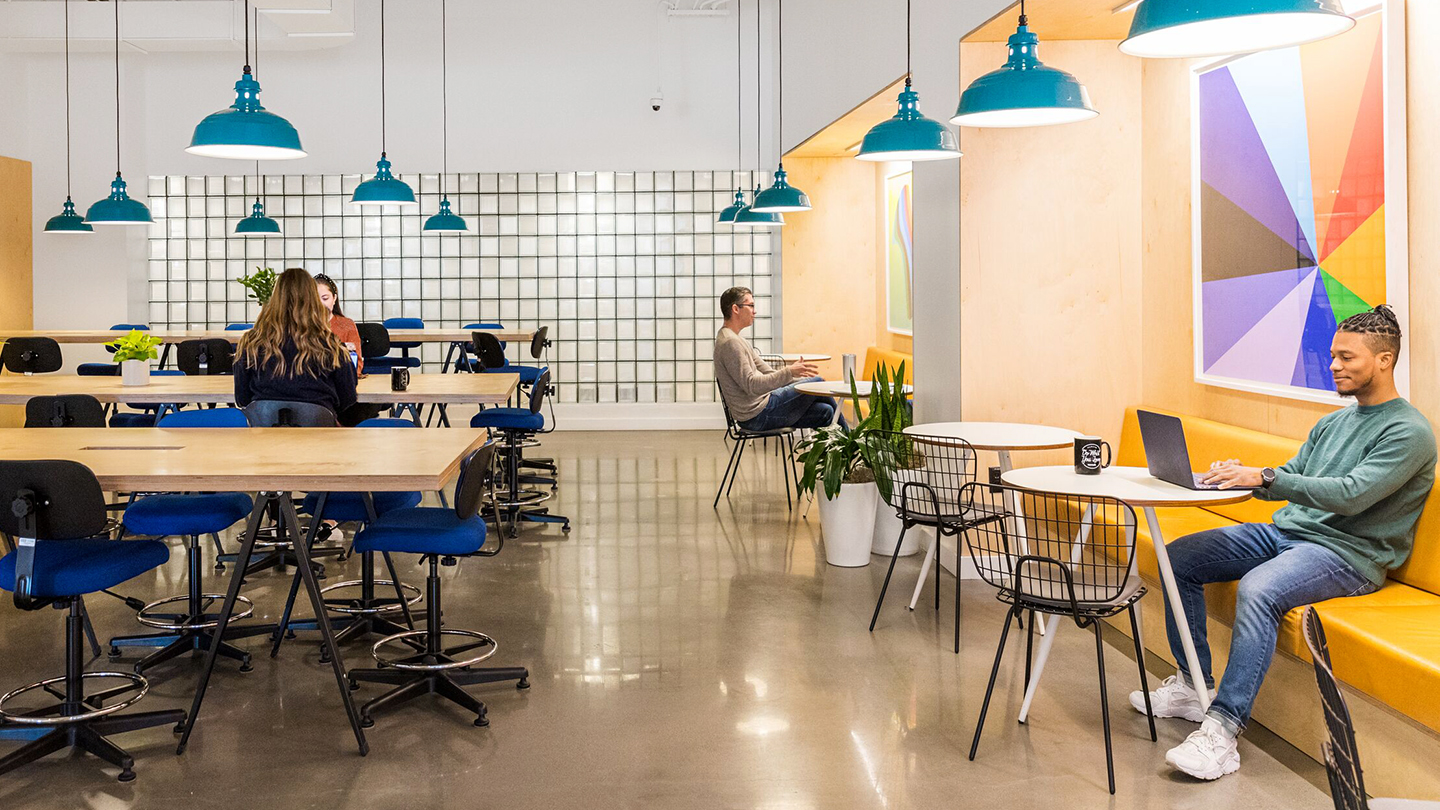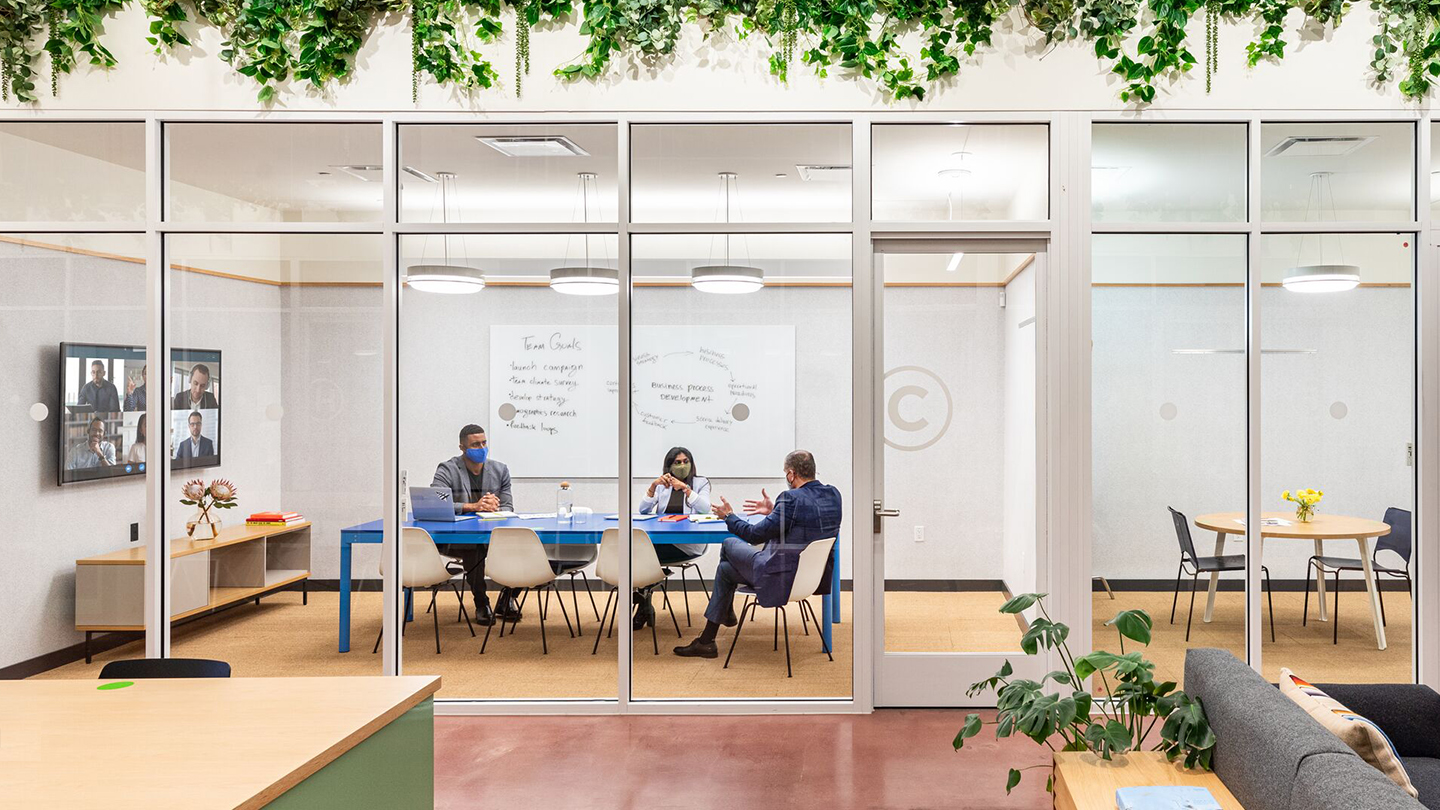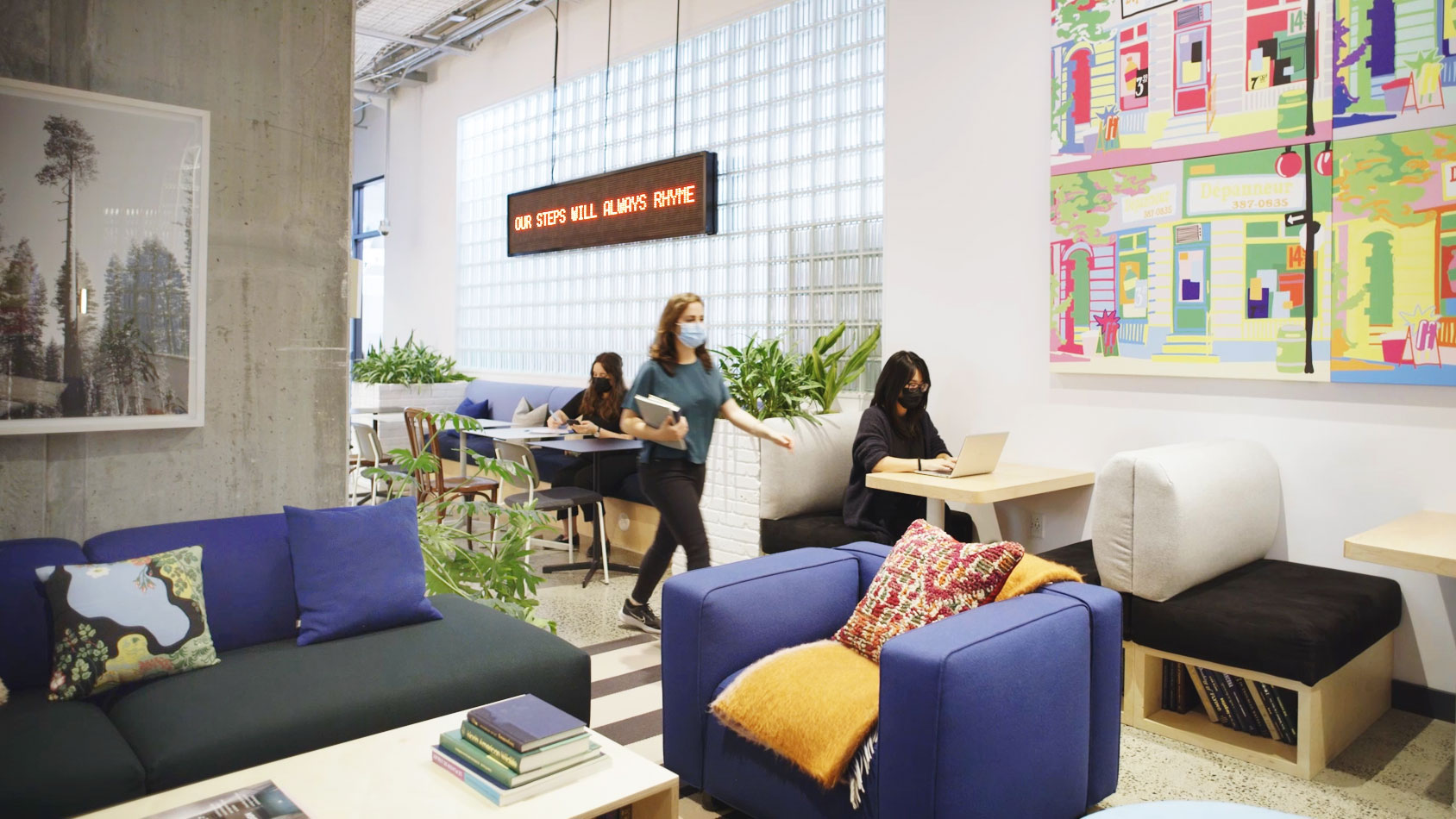A flexible office space is a type of workspace designed to provide employees with a variety of different places and ways to work. Unlike traditional offices with fixed and assigned desk positions, workers in a flexible office space can choose the area of the office that best suits the type of work they need to do at that moment.
Flexible workspaces can be easily rearranged to accommodate changing business objectives, or quickly scaled up and down to fit teams of different sizes. These kinds of dynamic office spaces are typically designed to be used in conjunction with flexible working arrangements to provide teams with the freedom to work where, when and how they want.
What is flexible working?
Flexible working is a term used to describe any working pattern that falls outside of traditional office hours or locations. That can mean working in different spots around the same office, working from home or at a remote desk, or working part-time or staggered hours.
Workers who don’t have to stick to inconvenient working hours or endure busy commutes are not only able to spend more of their time and energy doing great work, but they’re generally happier and even more productive than their office-bound colleagues. Flexible working gives people the opportunity to work how they want and where they want, fostering a healthy work-life balance in the process. By choosing their own schedules, employees can work around obligations such as doctor appointments and school drop-offs while avoiding rush-hour traffic and packed trains.
Not only does flexible working provide individual employees with the option to work in a way that suits their specific needs, but it also helps companies reduce costs and make the most out of their office layouts by maximising available space. With fewer people in the office at any given moment, it becomes easier to create common areas where teams can spontaneously come together and collaborate, or for workers to spin off into quiet zones with a laptop to concentrate on a particular task.
Important aspects of a flexible workspace
Flexible workspaces, or ‘flex office space’, adapt to suit the unique and changing requirements of a company at any given time, so naturally every office will look a little different. But there are a number of basic elements that you’ll find in most flexible spaces, each of which promotes versatility and collaboration.
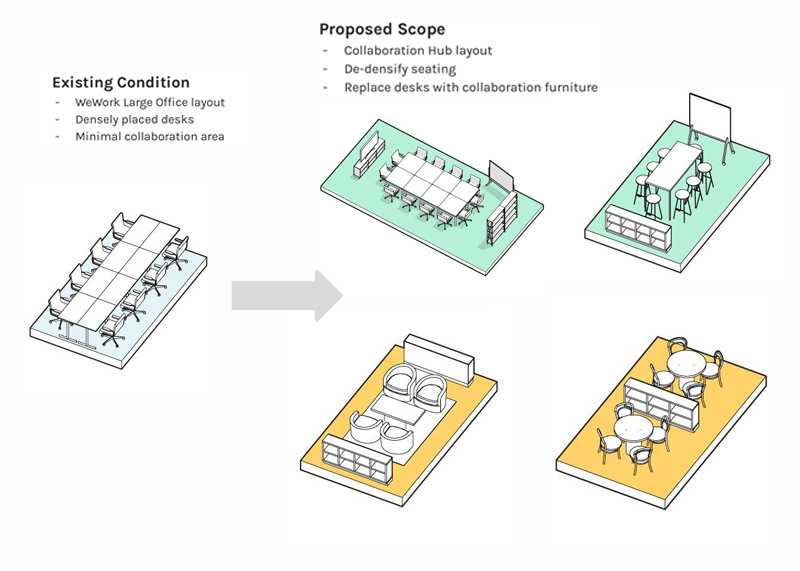
- Open-plan designs. The first open-plan offices appeared more than a century ago in New York City, but the familiar style of open-plan layouts we see today gained popularity in the 1960s, as interior designers sought ways to efficiently accommodate larger teams by removing physical walls between workers. Today, the open-plan office concept is widespread and a fundamental aspect of the flexible workspace, allowing for free-flowing collaboration between disparate departments.
- Quiet areas. A well-documented side effect of open-plan office design is an increase in ambient noise. Flexible workspaces mitigate this by designating quiet areas to provide workers with somewhere they can focus on tasks without interruption. These come in many shapes and sizes, from open spaces in some quiet corner of the building to private, sound-insulated phone booths.
- Adaptable workstations. Flexible office space often includes non-traditional styles of workstations. Standing desks in common areas promote the idea of moving around to use the space in different ways. In relaxed corners of the office, such as coffee bars and reception areas, comfortable chairs and natural lighting create flexible and inviting spaces where people will want to stick around.
- Shared amenities. When tethered to a single spot in the office, people naturally tend to store the things they need to get things done on and around their desks. A flexible space centralises these resources and makes them available to everyone who needs them. These shared utilities can be things like office supplies, printers and snacks, or entire spaces, such as conference rooms or informal common areas.
Benefits of a flexible workspace
A flexible workspace removes many of the barriers to productivity presented by a traditional office workspace. Consider a typical project timeline, which might start with a series of short, informal face-to-face meetings between a handful of people before a larger, more structured discussion takes place. From there, teams might need to splinter off into small groups or work alone on their tasks.
In a traditional office workspace, these stages all happen in the same fixed location, despite the space requirements of the project changing over time. However, with a flexible office space, people can choose a workstation that makes the most sense for the job they’re doing at that moment. That can mean working from a laptop in a quiet area where they can concentrate, using a casual shared space to catch up with other team leaders over coffee, or taking a day or two to work remotely. A well-designed flexible workspace gives employees the breathing room they need to do their best work on their terms.
For business owners, flexible workspaces offer other benefits beyond productivity. The most adaptable office layouts allow fast-moving companies to expand during periods of growth, or to scale back in size when fewer workers are commuting into the office. Dynamic spaces that can be easily reconfigured help with designing socially distanced office layouts, a key challenge in ensuring the safety of workers as they return to the office. Flexible offices can also be operated nearer to maximum occupancy, helping to reduce the cost of your lease.
The importance of office layout
The COVID-19 pandemic placed a renewed focus on the design and layout of our public spaces. The way we move around our cities has changed, and as restrictions ease up and we gradually filter back into pubs, restaurants, gyms and offices, the way we use indoor spaces will change too.
Most workplaces have adapted to social distancing guidelines by reconfiguring desk layouts, enhancing their cleaning routines and introducing new one-way systems. Flexible office spaces help businesses rise to this particular challenge with minimal disruption, allowing teams to easily spread out over a larger space or to work remotely.
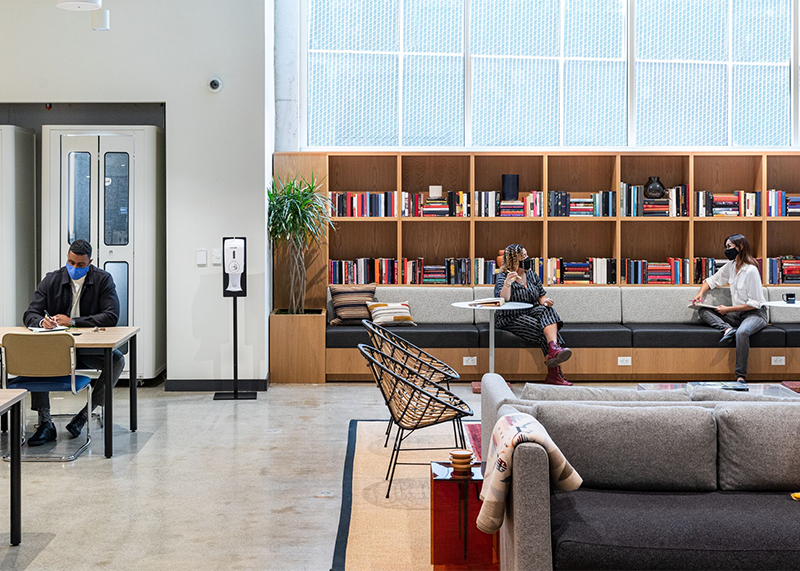
Thinking beyond the pandemic, a good office layout is one that optimises for safety, comfort and functionality. A flexible office space enhances productivity by providing teams with access to the shared spaces and the resources they need to get things done. When workers are supported by an office layout that fosters creativity and responds to their changing needs – whether that’s over the course of a project or the course of a day – they find it easier to meet their objectives.
How to implement flexible space in your office
There’s more to creating a flexible office space than simply throwing down a couple of beanbag chairs next to the coffee machine. You also need to foster an agile work environment, one that promotes the idea of using different areas of the office when they’re needed. Changing the office layout is the easy part; changing the office culture is the challenge.
Try de-formalising spaces that are typically reserved for a single purpose. The stuffy conference room you only use for the monthly debrief might be the perfect space for an activity-based work area, or simply somewhere to quietly catch up on emails. Meeting pods and comfortable furniture can create quiet zones in open-plan offices without the need for constructing clunky room dividers.
Technology plays an important role in flexible office design. Ensure that there are easily accessible outlets for charging devices next to most seats and a robust mesh network for wireless data in every corner of the office. Standardise the AV set-up for presentations across different rooms to make it as frictionless as possible to host a meeting in any part of the office.
We’re creatures of habit. It can take time for a company to adapt to a new way of working. But by creating versatile spaces and being responsive to how your teams use them, you can begin to realise the benefits of flexible office design.
WeWork provides dynamic, flexible and beautifully designed workplaces that reflect the evolving needs of workers. Find out more about how WeWork has reimagined the future of flexible working and explore how you could transform your company’s work culture.
Steve Hogarty is a writer and journalist based in London. He is the travel editor of City AM newspaper and the deputy editor of City AM Magazine, where his work focuses on technology, travel and entertainment.
Rethinking your workspace?





